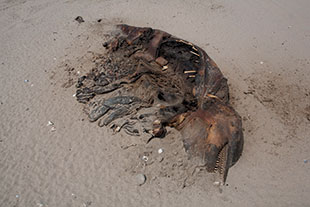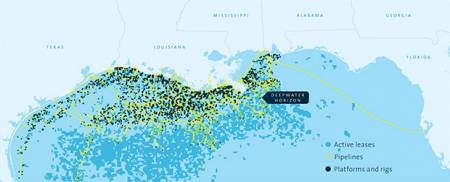 The use of a chemical dispersant to keep spilled oil from covering the Gulf coast accomplished more than that. It also diminished BP’s economic liability for the spill, while shifting the environmental impacts deep out of sight—at least for now.
The use of a chemical dispersant to keep spilled oil from covering the Gulf coast accomplished more than that. It also diminished BP’s economic liability for the spill, while shifting the environmental impacts deep out of sight—at least for now.
 Julia Whitty's story, The BP Cover-Up, is on the cover of the current issue of Mother Jones Magazine.In it, she reports, the long-term environmental consequences of the BP spill have been exacerbated by the company's use of a chemical dispersant to break up the leaking crude oil.
Julia Whitty's story, The BP Cover-Up, is on the cover of the current issue of Mother Jones Magazine.In it, she reports, the long-term environmental consequences of the BP spill have been exacerbated by the company's use of a chemical dispersant to break up the leaking crude oil.
 While the company reaped some economic and public perception benefits from the use of the dispersant, Whitty says it has exacerbated the long-term environmental consequences, because of the resulting immense plume of tiny toxic droplets sinking into the ocean depths.
While the company reaped some economic and public perception benefits from the use of the dispersant, Whitty says it has exacerbated the long-term environmental consequences, because of the resulting immense plume of tiny toxic droplets sinking into the ocean depths.
Whitty, an environmental correspondent for Mother Jones, was both angered and deeply saddened by the impacts of the spill that are already apparent along the Gulf coastline.
While the long-term consequences of the BP spill will not become fully apparent for years, perhaps decades, Whitty warns that the immediate dangers from the Deepwater Horizon site are not all past.
And there are some 50,000 additional well sites concentrated in the nothern Gulf of Mexico, as shown in the map below.
 Although it has often been compared to the Exxon Valdez spill, previously the worst in American waters, this
Although it has often been compared to the Exxon Valdez spill, previously the worst in American waters, this
chart of the 15 biggest oil spills in history shows that North America has been largely insulated from the other major spills the world has known.

 Live Radio
Live Radio